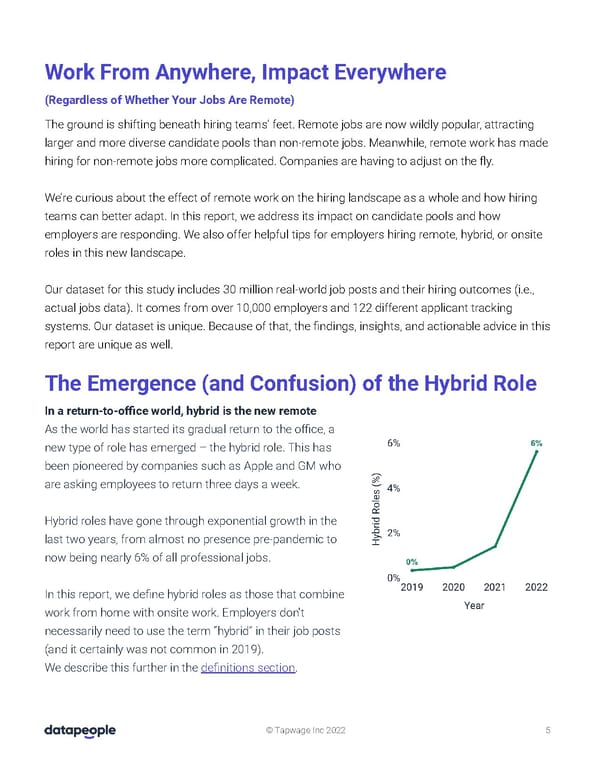Work From Anywhere, Impact Everywhere (Regardless of Whether Your Jobs Are Remote) The ground is shifting beneath hiring teams’ feet. Remote jobs are now wildly popular, attracting larger and more diverse candidate pools than non-remote jobs. Meanwhile, remote work has made hiring for non-remote jobs more complicated. Companies are having to adjust on the fly. We’re curious about the effect of remote work on the hiring landscape as a whole and how hiring teams can better adapt. In this report, we address its impact on candidate pools and how employers are responding. We also offer helpful tips for employers hiring remote, hybrid, or onsite roles in this new landscape. Our dataset for this study includes 30 million real-world job posts and their hiring outcomes (i.e., actual jobs data). It comes from over 10,000 employers and 122 different applicant tracking systems. Our dataset is unique. Because of that, the findings, insights, and actionable advice in this report are unique as well. The Emergence (and Confusion) of the Hybrid Role In a return-to-office world, hybrid is the new remote As the world has started its gradual return to the office, a new type of role has emerged – the hybrid role. This has been pioneered by companies such as Apple and GM who are asking employees to return three days a week. Hybrid roles have gone through exponential growth in the last two years, from almost no presence pre-pandemic to now being nearly 6% of all professional jobs. In this report, we define hybrid roles as those that combine work from home with onsite work. Employers don't necessarily need to use the term “hybrid” in their job posts (and it certainly was not common in 2019). We describe this further in the definitions section. © Tapwage Inc 2022 5
 Hiring in Distributed World Page 5 Page 7
Hiring in Distributed World Page 5 Page 7